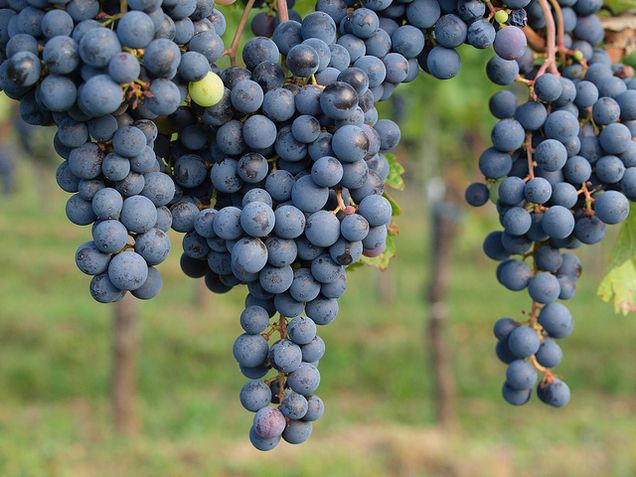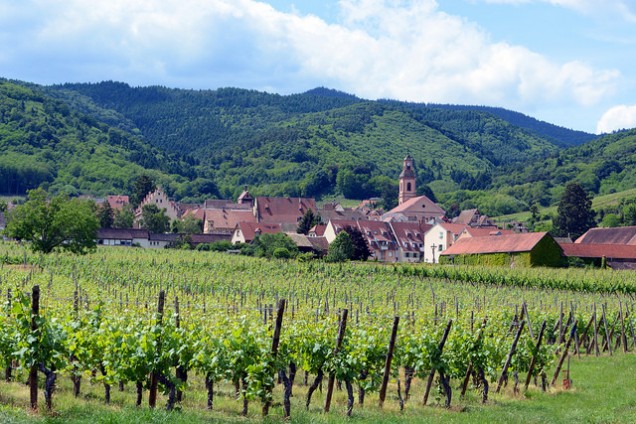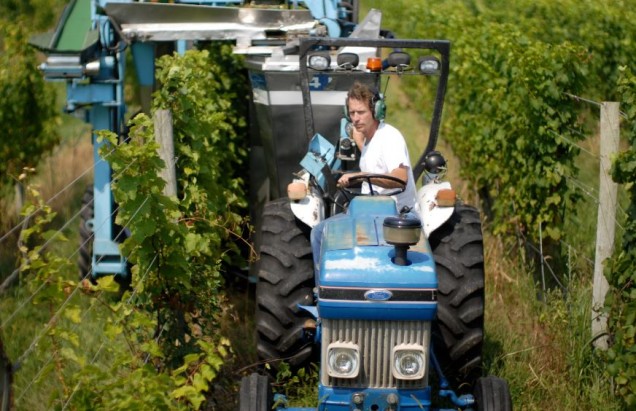A Sense of Place

By Rachel Black
Finding a neutral definition of the term terroir is not an easy task. For some, it can mean the soil and microclimate that imparts a distinct taste to a wine. For others, the concept of terroir includes the human expertise and craftsmanship that goes into growing grapes and making wine. In the end, terroir might sound like an extravagant French term to many people. However, it is a concept that has brought about a considerable amount of debate among academics and the wine industry. Why does terroir matter so much? Why is it becoming an important topic for producers of luxury food and wines in North America?
The Terroir Debate
Winemakers, importers, wine writers, and scholars have all hotly contested the concept of terroir. This is a debate that has been raging for a long time, but it was not until the 1990s, with a few exceptions, that academics started theorizing about the topic. Two camps of ‘terroiristes’ emerged: those who only considered the soil and microclimate, and others who included human interventions and culture in their definition. In 1998, geologist James
Wilson published a book entitled Terroir: The Role of Geology, Climate, and Culture in the Making of French Wines. In this volume, Wilson aims to show how, in the end, it is the uniqueness of soil that defines a wine and gives it a taste of place.
Master of Wine and Boston University lecturer Bill Nesto has taken a similar stance on the concept of terroir. He purports that the wines of Alsace offer an excellent case study because of the diversity of the soil types: “terroir is channeled through the soil in the vineyard, the husbandry of the vines, and the hoses, tanks, and casks in the wine cellar.” Wilson and Nesto do not give much space to human intervention in the terroir concept. They both agree that grape growers and winemakers should try not to intervene too much with the grapes. This can be seen as a ‘naturalist’ view of terroir. Nature, not human intervention, is responsible for shaping taste.
One of the main issues that social scientists and wine critics have with this ‘naturalist’ view of terroir is that it obscures the huge amount of technology and labor involved in producing wine. Amy Trubek’s book Taste of Place: A Culinary Journey into Terroiris one of the most recent publications to bring to light the necessity of including culture in the concept of terroir. She was not the first to make this point. Much earlier, the French historian Roger Dion also pointed out the idea that land created by nature or god is somewhat mythical.
The great vineyards of Burgundy are prime examples of the ways in which soil was brought from other places and entire hillsides were reshaped by human hands and later machines. The danger in naturalizing terroir is that we end up obscuring the complex human processes and reasoning that go into the construction of this concept. However, there are some interesting motivations for erasing human hands in winemaking.
Marion Demossier has brought to light the political and economic reasons for this emphasis on place rather than on production methods. Methods can be reproduced, but the naturalist argument for terroir makes a case for uniqueness. Here we can apply concepts of scarcity. A limited supply of a distinct wine that is in high demand will fetch a much higher price than a mass-produced alternative.
Regulating Terroir
The creation of the Appellation d’Origine Contrôlée (AOC) system in France is a classic example of protectionist legislation. Laws about geographic designation go back to the fifteenth century and have been applied to not only wine, but also other food products, most notably cheese. Encouraged by wine producers, French legislation further developed AOC laws to protect against the wine fraud that was predominant in the late nineteenth century and early twentieth century.
Laws such as AOC politicize the construction of place and imply relationships of power between local actors. Demossier has argued that this process is about exclusion. The rich landowners are privileged and get to play a part in the creation of boundaries, while the laborers and small landowners are marginalized in this process. It is important to point out that the boundaries of AOCs are not constructed by nature. Sometimes there is a river or a hill involved in legitimating the mapping process, but in the end, the drawing up of these maps is politically and economically determined. AOCs are a process of human geography that has shaped mental and physical maps over time.

With all this historical baggage, is the concept of terroir exclusively French? There is some debate on this point as well. The idea of terroir seems to be most applicable to European food and wine, where there is a long history of artisanal production and negotiation of norms and regulations. Now and in the past, economic interests in the European luxury food and wine industries have heightened efforts to define authenticity and limit the production of certain foods and wine. In most European countries, you will find some sort of certification process that attests to the authenticity of foodstuffs and wine. Italy has Denominazione d’origine controllata (DOC) and Spain has Denominaciones de Origen Calificada(DOCa). Nearly all of these certifications tie authenticity foremost to place. In addition, the production methods for wine and food are outlined and codified in these certifications.
This produces some interesting challenges and reveals another layer of complexity in the concept of terroir. Who gets to decide what the correct production methods are? The actors involved and those who have been deemed part of the official place where production is allowed to occur negotiate these definitions. This is not a neutral process with everyone on a level playing field. Generally, large, and often industrial, interests come to the fore. Although these regulations are put in place to protect artisanal production, this is not always what happens. The codification process is also counter intuitive to the cultures that have created these wines and foods. Culture is in constant evolution, but these codes represent attempts to seal off cultural processes and artifacts in a static vacuum.

The need and desire to protect local products and practices are certainly motivated by issues of fraud, which are becoming more problematic with the global exchange of luxury products. One only needs to look to the wine trade in major auction houses to see that fraud is an issue. This is not a new problem. The French have been unsuccessfully attempting to assure the provenance and quality of wine for some time. High profile cases of auction house wine fraud have been making the international headlines lately.
A Taste of Place in the New World
Trubek, an anthropologist at the University of Vermont, has looked at the notion of importing
Terroir to the United States, arguing that all places can express unique characteristics, whether in wine or other food and drink. She first searches for a notion of the taste of place in the Old World, and then tries to see whether it also manifests itself in the New World. Many of the issues concerning place and taste are different in North America. There is not the same weight of history. New traditions are in the process of being invented, and there is a great deal of experimentation happening in the United States when it comes to producing distinctive food and drink.
The recent rise in American artisanal products – in particular wine, cheese, and beer – is in part a reaction to the largely industrial nature of the food supply. In addition, food safety issues have become a constant worry. Consumers are more eager than ever to know the source of their food. They want to meet their farmer, or at least know where their food is from. In this sense, the importance of place in American food and wine is different from the French concept and history of terroir.
Defining taste of place or expressing a terroir is a work in progress for much of the American wine industry. The growing of vitis vinifera (grapes suitable for making quality wine) in the United States only began with the arrival of European colonists, but the first commercial winery was not established until 1799. For grape growers, developing vines that would thrive and produce well in American soil and climate was the first challenge. Knowing your place was the key to success, and this is something that takes time.
The United States is the fourth largest producer of wine in the world, and wine is produced in all 50 states. California, which has had a thriving wine industry since the end of Prohibition, produces the majority of all grapes and wine. Napa is known for its robust Cabernet Sauvignon wines and rich Chardonnay. By contrast, New England, one of the first areas of this country to be colonized by Europeans, is only in its infancy when it comes to growing vitis vinifera and producing quality table wines.
A Massachusetts Terroir Story
Wine producers in Massachusetts are still struggling to define terroir. The extreme climatic challenges on the eastern seaboard have been the main impediment to production and the definition of a sense of place. Grape growers must find microclimates that are suited to the production of this somewhat finicky vine. In addition, understanding what kinds of grapes to grow and how to vinify them has proven challenging.
There is one success story that stands out in this small field of Massachusetts wine producers. Westport Rivers Vineyard & Winery is one of the few who have realized that the coastal microclimate in southern Massachusetts is well suited for growing Pinot Noir grapes. The Russell family purchased a farm on the south coast of Massachusetts in 1982, in what is now known as the Southeastern New England Wine Growing Appellation. Two brothers currently run the operation, Rob Russell grows the grapes and his brother Bill is the winemaker.

Unlike many grape producers in the northeastern United States, the Russells grow only vinifera grapes, and no hybrids. They have also realized that producing sparkling wines using a ‘traditional’ method is a great way to deal with the lack of phenolic ripeness in grapes, which is a somewhat regular occurrence in the region. The gravel and loam soil of this area makes tart, citrusy wines that are outstanding with the local oysters. The pinnacle of taste of place is when local food and wine come together in a perfect pairing such as this.
One could even see this as the beginning of terroir in the Bay State. However, the Russells have had a hard time convincing other growers and wine producers in the area that Pinot and bubbly are preferred. With everyone doing something different, and often with mixed results, it is hard to create a consistent sense of place and a taste that goes with it.
Although Westport is producing an exceptional product, the Russells have found it challenging to overcome the less than stellar reputation of Massachusetts wines. Sweet fruit wines and off-dry wines made from local hybrid grapes have been the mainstays of the local industry. In addition, many winemakers buy their fruit from out-of-state sources. Cabernet Sauvignon wine from Massachusetts, made with grapes from California, undermines the idea of locality and the connection to place. The wine industry in Massachusetts offers an interesting case for examining the challenges that occur when applying the idea of terroir to the New World.
Connecting Food and Wine with Place
The concept of terroir is not without its issues. At the same time, it fits well with the current interest in the United States with provenance. It is a powerful concept that has come to shape consumer demand.
The idea of connecting food and drink to place, whether to create exclusivity or ensure quality, is not a new concept. In an age of heightened globalization, differentiation through localization may be the key to creating successful luxury products. What remains to be seen is how Americans will go about defining their own sense of place. The Russell brothers at Westport Rivers have shown that it is possible to express the unique taste of place through wine, but what will it take for others to follow this example and dig a little deeper into their own soil? There is a hungry and thirsty world eager to hear the stories of people producing delicious food and wine
 Rachel Black is Assistant Professor and Academic Coordinator of the Gastronomy Program at Boston University. She is a cultural anthropologist whose work looks at the production and consumption of food and wine in Europe and North America. Black is the author of Porta Palazzo: The Anthropology of an Italian Market (University of Pennsylvania, 2012) and co-editor of the forthcoming Wine and Culture: Vineyard to Glass (Berg, 2013).
Rachel Black is Assistant Professor and Academic Coordinator of the Gastronomy Program at Boston University. She is a cultural anthropologist whose work looks at the production and consumption of food and wine in Europe and North America. Black is the author of Porta Palazzo: The Anthropology of an Italian Market (University of Pennsylvania, 2012) and co-editor of the forthcoming Wine and Culture: Vineyard to Glass (Berg, 2013).
3 comments
Nice post. I learn some thing tougher on distinct blogs everyday. Most commonly it is stimulating to learn to read content from other writers and exercise a specific thing there.
talk to astrologers
Amazing tourist places. Canadian people have a great opportunity to get a $1000 Optimum Pc Gift Card from Loblaws Store. To get a Gift Card, you must participate in the Storeopinion.Ca Survey at StoreOpinion Ca Official Website. Your previous purchase receipt helps you to finish the survey quickly.
Contact Interior Design Company in Ghaziabad for the interior design services in Delhi NCR.